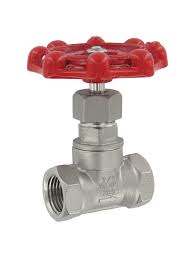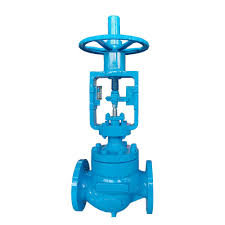Hand-Operated Globe Control Valve

The Application of Hand Operated Globe Control Valve
Introducing Cameron’s Handwheel Valve, Operating Lever Valve, and Manual Control Valve series. Engineered for precision, these valves offer versatile manual control for various industrial applications. Whether it’s regulating flow, pressure, or temperature, Cameron’s globe control valves provide reliable performance. With ergonomic designs and robust construction, our valves ensure smooth operation and long-term durability. From oil and gas to chemical processing, trust Cameron for superior valve solutions. Experience seamless control with our Hand Operated Globe Control Valve series.
What Are The Types Of Hand Operated Globe Control Valve?
- Handwheel Valve: These valves feature a handwheel mechanism for manual operation, allowing precise control over flow, pressure, and temperature.
- Operating Lever Valve: Operating Lever Valves utilize a lever mechanism for manual control, providing ease of use and efficient adjustment in various industrial settings.
- Manual Control Valve: Manual Control Valves offer straightforward manual adjustment using knobs or handles, making them suitable for applications where precision control is essential.
What Is Hand Operated Globe Control Valve?
A Hand Operated Globe Control Valve is a type of valve designed for manual control in industrial settings. It typically consists of a handwheel or operating lever mechanism that allows operators to regulate the flow of fluids through a pipeline. These valves are used to adjust flow rates, pressure levels, and temperatures within a system. They offer precise control and are commonly found in applications where automation is not feasible or where operators need to make frequent adjustments.
How to Select the Right Hand Operated Globe Control Valve?
Selecting the right Hand Operated Globe Control Valve involves considering factors such as flow rate, pressure, temperature, and material compatibility. Determine the specific requirements of your application and choose a valve with appropriate size, pressure rating, and control mechanism. Consider factors like corrosion resistance and maintenance needs to ensure optimal performance and longevity. Consulting with a valve expert can also help in making the right selection.
Features of Hand Operated Globe Control Valve
- Versatility: Suitable for various applications across industries including oil and gas, chemical processing, and water treatment.
- Precision Control: Allows fine-tuning of flow, pressure, and temperature manually, ensuring accurate adjustments.
- Durable Construction: Built with robust materials such as stainless steel or brass, ensuring longevity and reliability in harsh environments.
- Easy Operation: Designed with ergonomic handwheels or operating levers, providing smooth and effortless control.
- Flexibility: Can be installed in different orientations and configurations to accommodate specific system requirements.
- Compatibility: Compatible with a wide range of fluids including liquids, gases, and steam, making them versatile for various applications.
- Low Maintenance: Requires minimal upkeep due to sturdy construction and simple design, reducing downtime and costs.
- Cost-Effective: Offers a cost-effective solution for manual flow control compared to automated systems, especially in smaller-scale operations.
Advantages and Disadvantages of Hand Operated Globe Control Valve
Certainly, here are the advantages and disadvantages of Hand Operated Globe Control Valve:
Advantages:
- Manual Control: Allows operators to adjust flow, pressure, and temperature precisely according to the system requirements.
- Reliability: Does not rely on external power sources, making it suitable for use in remote locations or in case of power outages.
- Cost-Effective: Typically more affordable than automated valves, making them a budget-friendly option for certain applications.
- Versatility: Can be used in various industries and applications due to their ability to handle different fluids and operating conditions.
- Simple Design: Easy to install, operate, and maintain, requiring minimal training for personnel.
Disadvantages:
- Labor-Intensive: Requires manual intervention for adjustment, which can be time-consuming and labor-intensive, especially in large-scale operations.
- Limited Automation: Lacks the automation features of other types of valves, which may be necessary for highly precise or complex processes.
- Potential for Human Error: Manual operation increases the risk of human error, leading to incorrect adjustments or system failures.
- Limited Remote Control: Not suitable for remote operation or integration into automated control systems without additional accessories or modifications.
- Limited Control Range: May have limited control range compared to automated valves, which can affect precision in certain applications.

The Specifications of Hand Operated Globe Control Valve
| Specification | Details |
|---|---|
| Type | Hand Operated Globe Control Valve |
| Ball Material | Stainless Steel |
| Attachment Type | Flanged |
| Thread Standard | N/A |
| Thread Size | N/A |
| Body Material | Carbon Steel |
| Safe for Use With | Liquids, gases, steam |
| Handle Type | Handwheel |
| Handle Material | Stainless Steel |
| Maximum Working Pressure (psi) | 250 psi |
| Maximum Working Pressure (bar) | 17.2 bar |
| Operating Pressure | 10 – 150 psi |
The Installation Steps for Hand Operated Globe Control Valve
- Preparation:
- Gather all necessary tools and equipment: wrenches, pipe dope, Teflon tape, etc.
- Ensure the work area is clean and free from debris.
- Valve Inspection:
- Examine the valve for any signs of damage or defects.
- Check that the valve size matches the pipe size.
- Valve Positioning:
- Determine the correct location for the valve within the pipeline.
- Ensure the valve is oriented correctly for the desired flow direction.
- Flange Connection:
- Align the valve flanges with the corresponding pipe flanges.
- Insert and tighten the bolts evenly to secure the connection.
- Threaded Connection (if applicable):
- Wrap the male threads with Teflon tape.
- Screw the valve into the threaded pipe fitting, ensuring a tight seal.
- Welding (if applicable):
- Clean the welding surfaces of both the valve and the pipe.
- Weld the valve to the pipeline according to welding specifications.
- Testing:
- Perform a pressure test to ensure the valve operates correctly and there are no leaks.
- Open and close the valve several times to check for smooth operation.
- Final Checks:
- Inspect the installation for any loose connections or irregularities.
- Verify that all valves are properly labeled for easy identification.
The Operation Theory of Hand Operated Globe Control Valve
Hand Operated Globe Control Valve: The Hand Operated Globe Control Valve operates on the principle of manually adjusting the flow of fluid within a pipeline. It typically consists of a handwheel or operating lever that, when turned or operated, moves a stem connected to the valve’s closure element (such as a disk or plug). By rotating the handwheel or operating the lever, the operator can precisely regulate the flow rate, pressure, and temperature of the fluid passing through the valve. This manual control mechanism provides flexibility and allows operators to make adjustments according to process requirements.
Operating Force Valve: Operating Force Valves are designed to respond to external forces or pressure changes to control the flow of fluid. These valves utilize mechanisms such as springs, diaphragms, or pistons to modulate the flow rate based on the applied force or pressure. In some cases, manual force may also be applied to adjust the valve’s operation. Operating Force Valves are commonly used in applications where precise control is required, and where automated or remote operation may not be feasible or practical.
Hand Adjustment Valve: Hand Adjustment Valves, as the name suggests, allow for manual adjustment of flow, pressure, or temperature by directly manipulating a control mechanism by hand. These valves typically feature knobs, handles, or levers that can be turned or moved to regulate the flow of fluid. Hand Adjustment Valves offer simplicity and ease of operation, making them suitable for applications where quick adjustments are needed, or where automation is not required or desired.
